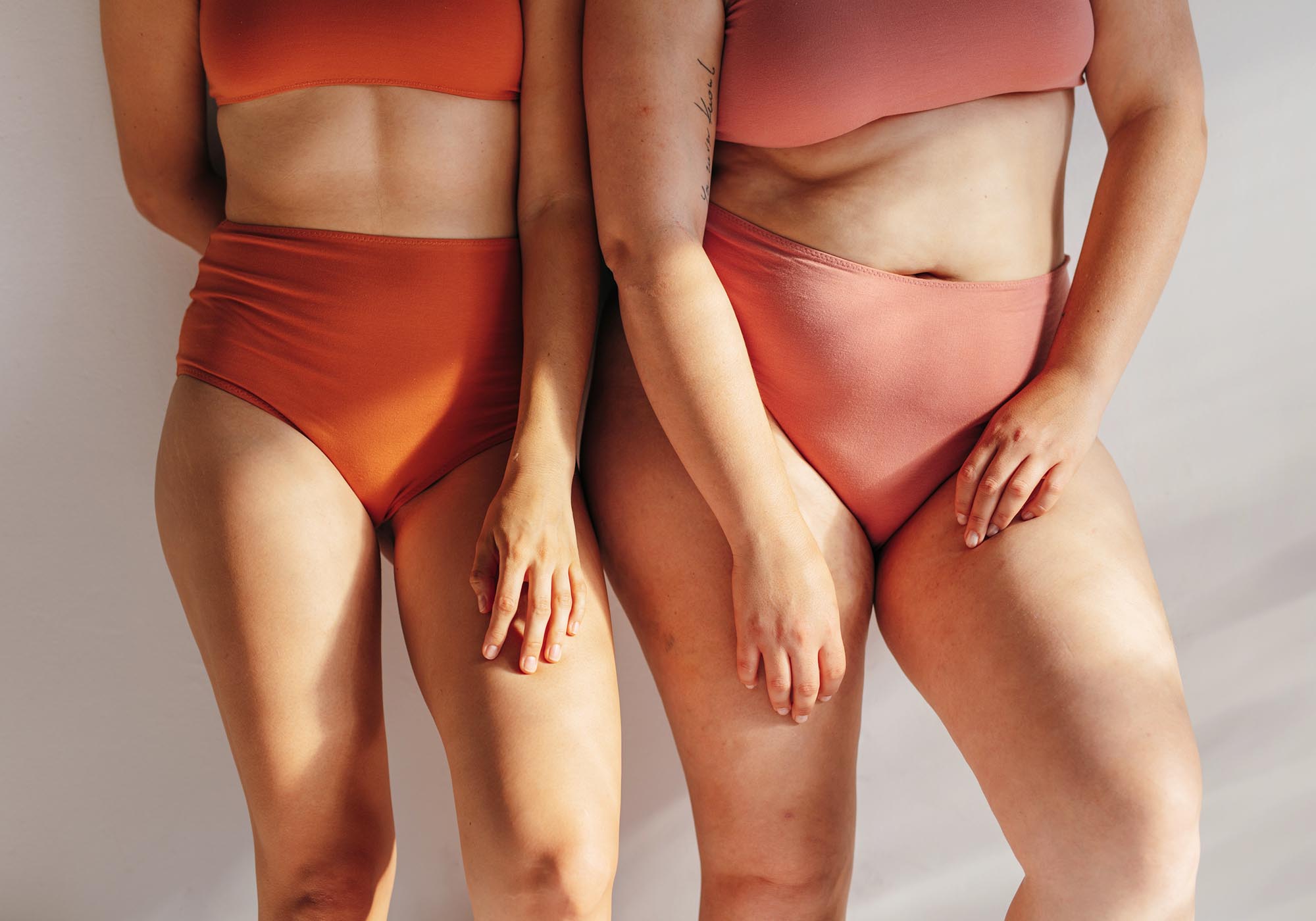Branded plastic surgery procedures are typically spun to sound less serious, less scary, less scarring—and less, well, surgical—than they truly are. For proof, you need look no further than the liposuction realm, where you’ll find all manner of silliness, from Tickle Lipo to AirSculpt to FunSculpting. While all three involve a steel cannula piercing the skin and sliding through the subcutaneous tissue to extract some quantity of fat, these trademarked methods are marketed as minimally invasive, since they’re commonly performed under local anesthesia rather than general, and are therefore breezier (or more…amusing?) than traditional lipo—or so we are to believe.
But then there’s Strawberry Laser Lipo, which sounds like a similarly sugarcoated surgery but is, in fact, not. While plastic surgeons use the phrase laser lipo to refer to a specific type of liposuction that melts fat with laser heat for easier removal, the proprietors of Strawberry Laser Lipo have adopted this well-established surgical term for a completely noninvasive procedure, making it seem, arguably, more serious than it actually is. It’s not a complete misnomer, however. “People usually associate the word ‘lipo’ with liposuction, which is [the] physical removal [of fat], but here it is referring to lipolysis”—or the breakdown of fats, says Dr. Paul Jarrod Frank, a board-certified dermatologic surgeon in New York City.
The U.K.-born treatment, which uses FDA-cleared “laser paddles” to deliver low-energy light beneath the skin and disturb fat cells, has existed since 2007, according to the company—but has recently been generating a fair amount of buzz (and Google searches galore). We enlisted Dr. Frank and two top plastic surgeons to help us demystify the fat-busting modality and explain how it compares to real-deal liposuction.
What is Strawberry Laser Lipo?
Here’s how the company lays out the science: “The lasers penetrate the skin just deep enough to reach the layers of fat (9–13 mm). When the fat cells absorb the energy from the lasers, they release water, glycerol, and free fatty acids. The harmless fat cell content is then removed from the body through lymphatic drainage, giving results that get better over time.”
Patients are instructed to do at least 20 minutes of cardiovascular exercise within 12 hours of each Strawberry Laser Lipo treatment (a series of eight is recommended). Without this stimulus, the company notes, “the fat cells will return to normal within 24 hours.” The company also advises eating clean and limiting alcohol, to maintain results.
According to Dr. Frank, what Strawberry “describes as a form of cold laser is really a type of red light, which penetrates only about a centimeter.” At this depth, he adds, “very little fat removal is going to be accomplished.” He goes on to explain that most people, even those who are underweight, “have significantly more depth to their normal fat tissue,” so it stands to reason that “those who have weight to lose will need greater penetration.”
Dr. David Shafer, a board-certified plastic surgeon in New York City, agrees that the Strawberry device’s 660 nanometer wavelength and 50 nanowatt output put it squarely in the red light spectrum, which is “used commonly during facials and other superficial treatments and [for] wound healing,” he says.
Does Strawberry Laser Lipo really work?
The company shared with us the double-blind clinical study touted on their website as proof of Strawberry Laser Lipo’s safety and efficacy. Conducted in 2013, the trial includes 32 subjects, who received eight sessions over a four-week period (11 of those participants received a placebo treatment). Of the 21 people in the experimental group, 20 lost more than 1.6 inches around the waist and one did not, per the paper. No adverse events were reported.
While it’s unclear what type of placebo treatment the control group received, the paper does note that these folks were required to carry out the same cardio routine as the test group.
Dr. Frank points out that the study, which does not seem to be peer-reviewed, is very small, is likely company-funded, and involves unidentified investigators—“which makes it difficult to assess its validity,” he says. Additionally, he’s skeptical of any fat-reduction technology that promises immediate results. “The destruction of fat cells, via external or internal means, is inevitably going to cause leakage of fatty acids and other types of ‘active ingredients’ from fat cells, which is going to promote inflammation,” he explains. With Strawberry Laser Lipo, however, “not only is there zero inflammation after this treatment, but the company’s claiming there is immediate improvement from it—it’s biologically impossible to lose inches that quickly.”
Upon reviewing the tech, Dr. Jason Pozner, a board-certified plastic surgeon in Boca Raton, Florida, tells us that “this [device] is very similar to other low-level light devices we saw five to eight years ago. They tend to show good studies but leave a lot of disappointed patients in their wake. I would not put too much faith in one company-supported study, as many studies are typically needed, as well as clinical results in the field, for us to highly recommend a product.”
How does Strawberry Laser Lipo compare to real liposuction?
In short: it doesn’t. Surgical liposuction carts away measurable amounts of fat. The operation has been studied and refined over decades and is proven to be safe and effective. While lipo is real surgery—and, as such, comes with swelling, bruising, risks, and downtime—the results are immediate and lasting and often quite dramatic. Rather than merely debulking treatment areas, the best surgeons use sophisticated liposculpture techniques and technologies to contour and define the body for a natural, athletic look.
“There is no noninvasive ‘liposuction’ technique that can even compare to true surgical liposuction and the results it can achieve,” says Dr. Shafer.
By encouraging exercise and a healthy diet, the Strawberry protocol may help people lose weight, notes Dr. Frank—“but on a scientific level, there is very little evidence … that red light is going to give any fat reduction whatsoever. It really cannot be compared to more invasive liposuction techniques.”
What’s the bottom line?
While Strawberry Laser Lipo appears to be very safe, our experts are unimpressed with the technology and find the results to be questionable at best. “Since I have never used the Strawberry Laser, I can’t really speak to specifics, but the wavelength, energy, and delivery I see for the device make it very hard to believe that a patient can lose inches instantly—if at all,” Dr. Shafer says. “It seems to me, it’s all a marketing ploy.”
If you’re considering some type of surgical or nonsurgical fat reduction procedure, consult with a board-certified dermatologist or plastic surgeon about medically sound options that will work for your body, your lifestyle, and your budget. Above all, bear in mind that the name of your physician matters far more than that of the latest trending treatment.











